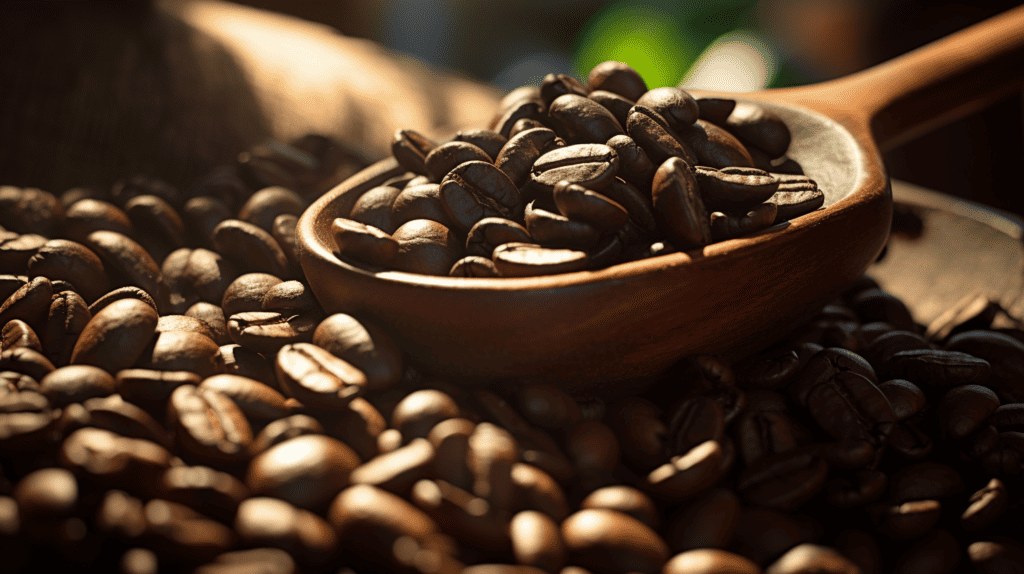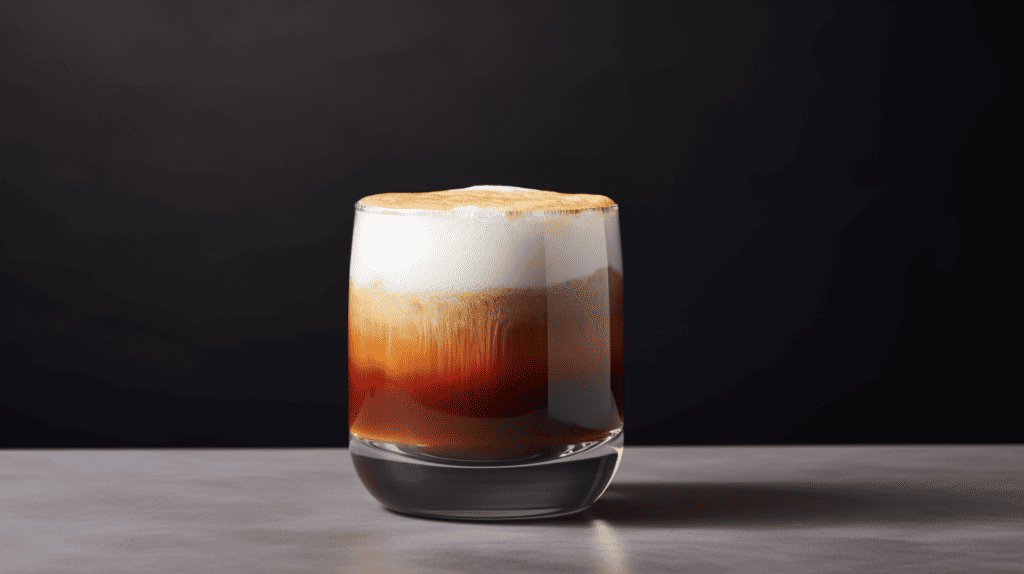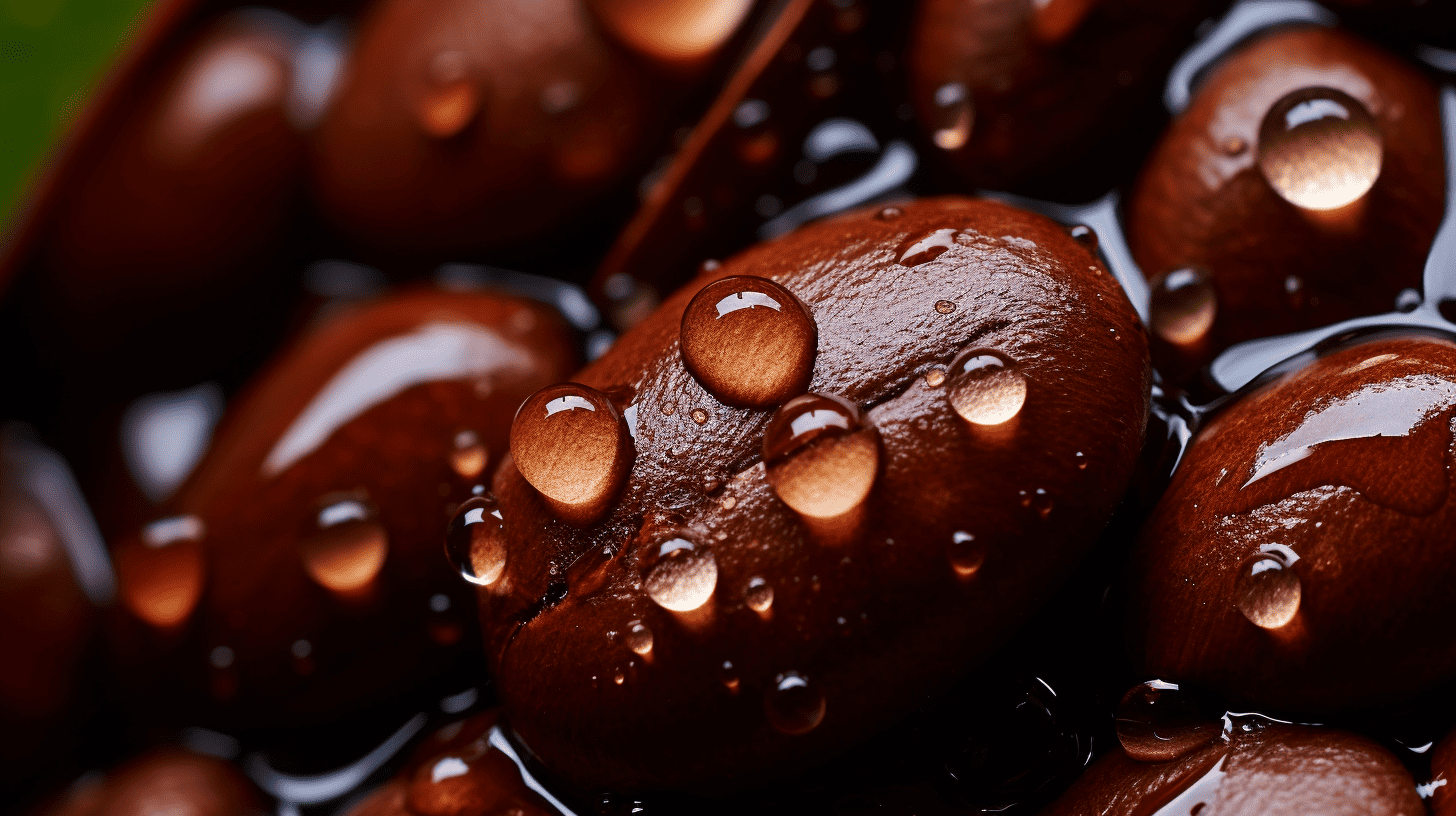Imagine starting your morning with the rich, full-bodied taste of Italian espresso brewed to perfection in your kitchen as we focus on the History of the Bialetti Brikka. This dream became a reality for millions of coffee aficionados with the invention of the Bialetti Moka Express in 1933.
But it didn’t stop there – Bialetti continued to revolutionize the espresso game by introducing an upgraded version known as the Brikka in 1953.
Key Takeaways
- The Bialetti Moka Express, invented in 1933, became an iconic symbol of Italian coffee culture and found its way into 90% of all Italian homes.
- Invented in 1953 as an improvement to the Moka Express, the Bialetti Brikka revolutionized how Italians enjoyed their daily espresso fix with patented technology for richer crema.
- The Bialetti company’s innovative designs have made espresso accessible to millions globally while maintaining high standards for quality and taste. They also contribute greatly to environmental sustainability efforts by using recyclable materials in production and packaging.
- While both Moka coffee and espresso are beloved by coffee enthusiasts worldwide, they differ in their brewing methods, grind size, extraction time, pressure, flavor profiles resulting in unique coffee experiences that continue to be enjoyed worldwide.
The Birth And Legacy Of Bialetti
Alfonso Bialetti’s vision to create a stovetop espresso maker led to the invention of Moka Express in 1933, which became an iconic symbol of Italian coffee culture and found its way into 90% of all Italian homes.
The Vision Of Alfonso Bialetti
As a skilled Italian engineer and aluminum metalworker, Alfonso Bialetti’s vision was to revolutionize the world of coffee making. His passion for innovation and intuition for design led him to invent the iconic Moka Express in 1933.
Alfonso Bialetti showcased his mastery of technical know-how and exemplary craftsmanship when he founded his company. Originally an aluminum manufacturer, it wasn’t long before they focused on creating revolutionary coffee brewing devices.
The fascinating story behind Bialetti began with Luigi de Ponti working under Alfonso’s guidance to develop what would soon become a symbol of Italian coffee making – the Moka Express.
Who is Alfonso Bialetti?
Video Summary the Invention of the Moka Express:
- Italians have a robust culture and admiration for coffee, with espresso being preferred for its quick caffeine jolt.
- The act of coffee drinking is historically tied to intellectual discussions, politics, and journalism, as exhibited during the Enlightenment period and the Futurist movement.
- Aluminum rose to popularity in Italy during the 1920s and 1930s due to its ease of production and ties to Fascism.
- Alfonso Bialetti, the inventor of the Moka coffee maker, epitomized Italian design through the Moka’s blend of elegance, simplicity, and speed.
- The aluminum moka pot also symbolized a successful model for Italy’s self-proclaimed autarchy.
- The term “limit” defines Italian design, encouraging creativity and innovative problem-solving using available materials.
- The key to innovation often lies in the creative use of leftovers, not just the primary ingredient.
- Italian design is about creativity, adaptability, and re-invention of old heritages.
- Bialetti’s moka pot maintained a balance between production and tradition, as well as technology and artisanal craftsmanship.
- Renato Bialetti’s advertising campaign elevated Bialetti’s moka pot to an iconic aspect of Italian life.
- Coffee making is an aesthetic experience, a testament to the art of hospitality and gift-giving.
- In Naples, it is common for individuals to pay for two coffees at a bar and leave one for a stranger, allowing them to experience the joy of receiving.
- Homework: Check out excellent Italian coffee machine designs, and try an espresso in a bar in Naples.
The Invention Of Moka Express In 1933
The Moka Express was invented in 1933 by Luigi de Ponti, who worked for the Bialetti company. The Italian engineer Alfonso Bialetti hired him to design a stovetop coffee maker that would make brewing espresso easier and more convenient than ever before.
De Ponti’s invention became known as the Moka Express, an aluminum coffee pot with three compartments: one for water, one for ground coffee, and one for brewed espresso. Thanks to its simplicity and affordability, it quickly became a staple in Italian homes.
Renato Bialetti’s Art Deco Design
My favorite aspect of the Bialetti coffee maker is Renato Bialetti’s Art Deco design. The iconic octagonal shape and the “little man with a mustache” logo have been essential to Italian households for decades.
Renato, Alfonso’s son, took over the company after World War II and wanted to ensure his father’s invention became synonymous with Italian culture.
The timeless Art Deco design has become so popular it can be seen in museums all around Europe as a perfect example of mid-century design philosophy.
Bialetti’s Global Impact
The Bialetti company has had a profound global impact on coffee-making. The Moka Express, invented by Luigi de Ponti and marketed by the Bialetti company in 1933, quickly became an iconic symbol of Italian coffee making.
It found its way into 90% of all Italian homes, becoming a part of local culture.
But Bialetti’s influence goes beyond Italy. With over 200 million units sold worldwide, the Moka pot is synonymous with stovetop coffee-making in many countries worldwide.
The company’s innovative designs have made espresso accessible to millions globally while maintaining high standards for quality and taste.
In addition to meeting consumer demands for high-quality espresso makers, the company has also contributed significantly to environmental sustainability efforts by using recyclable materials in production and packaging.

The Significance Of Moka Coffee And Bialetti’s Moka Express
Moka coffee, known for its full-bodied taste and syrupy texture, has become essential to Italian coffee culture. Bialetti’s Moka Express, invented in 1933, revolutionized how Italians enjoyed their daily espresso fix.
Moka Coffee Vs. Espresso
Although coffee enthusiasts belove Moka coffee and espresso, they have some key differences that set them apart. Let’s look at these two popular brewing methods and their resulting coffee beverages.
| Moka Coffee | Espresso | |
|---|---|---|
| Brewing Method | Stovetop Moka pot, such as the Bialetti Moka Express, uses steam pressure to force water through coffee grounds. | Espresso machine, typically electric, uses high pressure (9 bar or higher) to force hot water through finely-ground coffee. |
| Grind Size | Medium-fine grind. | Very fine grind. |
| Extraction Time | Approximately 5-8 minutes. | It takes about 25-30 seconds. |
| Pressure | 1-2 bar pressure. | 9 bar pressure or higher. |
| Crema | Traditionally, Moka coffee does not have a crema layer on top, but the Bialetti Brikka improved on this with its patented technology. | It takes about 25-30 seconds. |
| Flavor Profile | Strong, rich, and bold, but not as concentrated as espresso. | Intensely rich, concentrated flavor with a slightly thicker consistency than Moka coffee. |
| Popularity | Famous worldwide, particularly in coffee shops and cafes. | Popular worldwide, particularly in coffee shops and cafes. |
As you can see, while Moka coffee and espresso share some similarities, they also differ in their brewing methods, grind size, extraction time, pressure, and flavor profiles. These differences ultimately result in unique coffee experiences that coffee lovers worldwide continue to enjoy.
The Popularity Of Moka Express In Italy
The Moka Express quickly became a staple in Italian households, with 90% of all homes having one. This stovetop espresso maker was affordable and easy to use, which made it accessible to everyone.
It quickly became a symbol of Italian culture and tradition. The popularity of the Moka Express sparked an interest in coffee for Italians, leading to the creation of coffee bars or “bars” throughout Italy.
These small cafes served espresso drinks like cappuccinos and lattes, eventually becoming social centers where friends would gather and catch up over coffee.

The Introduction Of Bialetti Brikka: A Revolutionary Espresso Maker
Italians love their coffee, and the Bialetti company is one of the reasons why. The Bialetti Moka Express stovetop espresso maker was a game-changer in Italian coffee culture, with almost everyone owning one at home. However, another machine has revolutionized coffee-making even more – the Bialetti Brikka. Invented in 1953 as an improvement to the Moka Express, this espresso maker creates a layer of crema atop your shot of espresso for full-bodied flavor and syrupy texture. Join me on this journey to discover how the Brikka made its way into our kitchens and became an iconic symbol of Italian coffee making.
Key Takeaways
- The Bialetti Moka Express, invented in 1933, became an iconic symbol of Italian coffee culture and found its way into 90% of all Italian homes.
- Invented in 1953 as an improvement to the Moka Express, the Bialetti Brikka revolutionized how Italians enjoyed their daily espresso fix with patented technology for richer crema.
- The Bialetti company’s innovative designs have made espresso accessible to millions globally while maintaining high standards for quality and taste. They also contribute significantly to environmental sustainability by using recyclable materials in production and packaging.
- While both Moka coffee and espresso are beloved by coffee enthusiasts worldwide, they differ in their brewing methods, grind size, extraction time, pressure, and flavor profiles resulting in unique coffee experiences that continue to be enjoyed worldwide.
The Unique Features And Design Innovations
As a coffee lover, I am fascinated by the unique features and design innovations of the Bialetti Brikka. No wonder this stovetop espresso maker has become a game-changer in the world of espresso-making. Here are some of its standout features:
– Patented Technology for Richer Crema: The Bialetti Brikka has a patented valve that helps to create more pressure, resulting in richer crema. This unique feature is what sets it apart from other stovetop espresso makers.
– Unique Pressure Valve System: Unlike other espresso makers that rely on gravity to create pressure, the Bialetti Brikka uses a pressure valve system that ensures consistent pressure whenever you brew your coffee.
– Art Deco Design: The Bialetti Brikka’s design is inspired by the art deco movement of the early 20th century. Its sleek lines and geometric shapes make it functional and an eye-catching addition to any kitchen.
– High-Quality Materials: The Bialetti Brikka is made from high-quality materials such as aluminum and stainless steel, ensuring that it will last for years to come.
– Ease of Use and Convenience: Brewing espresso with the Bialetti Brikka is incredibly easy. Add water and coffee to the pot, place it on a stovetop burner, and wait for delicious crema-filled espresso.
The unique features and design innovations of the Bialetti Brikka make it a favorite among coffee lovers worldwide. Its consistently producing rich crema in every cup makes it stand out among other stovetop espresso makers. Its timeless art deco design and high-quality materials ensure its continued popularity for generations to come.

The Patented Technology For Richer Crema
One of the key features that set the Bialetti Brikka apart from its predecessor, the Moka Express, is its patented technology for richer crema. The Brikka’s unique design allows pressure to build up inside the pot during brewing, resulting in a layer of crema on top of each shot.
This frothy layer adds a rich texture and delightful flavor to your espresso.
This innovation has made the Bialetti Brikka a game-changer in espresso-making. It has become incredibly popular among coffee enthusiasts who appreciate quality and convenience in their coffee experience.
The Unique Pressure Valve System
Its unique pressure valve system is one of the most significant features that set Bialetti Brikka apart from other stovetop espresso makers. Unlike traditional moka pots, which rely on steam pressure to brew coffee, the Brikka has a special valve system that regulates the water flow and increases pressure inside the pot.
This innovative design creates a richer and creamier crema layer on top of the espresso. The valve also ensures uniformity in brewing each cup, so you can enjoy consistent quality every time you use it.
The Ease Of Use And Convenience Of Brikka
Using the Bialetti Brikka to brew your morning espresso is incredibly easy and convenient. Firstly, there’s no need for any electricity or complicated machinery – place it on your stovetop and let it work its magic.
The Bialetti company has also thoughtfully designed the parts of the Brikka to be easily disassembled and cleaned, making maintenance a breeze. Plus, with only a few simple steps required to brew a fresh cup of coffee, you won’t have to worry about any complex instructions or lengthy learning curves.

The Cultural Significance And Continued Success Of Brikka
The Bialetti Brikka has played a significant role in Italian coffee culture and continues to gain global popularity, thanks to its timeless design, high-quality materials, and patented technology for richer crema.
Its Role In Italian Coffee Culture
For Italians, coffee is more than just a morning ritual. It’s an integral part of the culture and daily life. The Bialetti Brikka has played a significant role in Italian coffee culture since its invention in 1953.
The Brikka’s cultural significance comes not only from its ability to make high-quality espresso but also from the experience it provides. It allows individuals to achieve barista-level espresso without leaving their home, making it accessible and affordable for everyone.
The Global Popularity Of Brikka
The Bialetti Brikka has become a favorite among coffee lovers worldwide. Its unique pressure valve system, which improves the crema layer on top of your espresso, is just one reason why it’s so popular.
The easy-to-use design also makes it perfect for people who want a great-tasting espresso without spending much time or money on expensive machines. Whether in Italy or elsewhere, you’ll find that Brikka has become synonymous with quality coffee-making and Italian tradition.
Moreover, its sleek Art Deco-inspired design and high-quality materials have helped make the Brikka synonymous with style and functionality. It’s not only about excellent coffee making but also elevating home décor.
The Timeless Design And High-quality Materials
As someone who appreciates aesthetics, the design of Bialetti’s coffee makers is striking. Their art deco-inspired Moka Express design has remained unchanged since its creation in 1933, making it a timeless classic for Italian coffee lovers.
Equally important as design is the high-quality materials used to create these stovetop espresso makers. Bialetti uses only top-notch aluminum in their production, perfectly capable of withstanding high heat and pressure — essential components when brewing quality coffee at home.
New Innovations And Upgrades To Brikka
Over the years, Bialetti has continued to improve and upgrade its iconic Brikka espresso maker. One of the most significant improvements is adding a pressure valve system that controls the amount of steam released during brewing, leading to an even richer crema layer on top of each cup.
Another innovation is using high-quality materials such as stainless steel for durability and longevity. Bialetti also introduced new sizes and color options to appeal to different tastes and preferences.
These upgrades have helped keep Brikka at the forefront of Italian coffee culture.

The Future Of Bialetti Brikka And Italian Coffee Making
Bialetti’s continued innovations promise to keep the Brikka at the forefront of espresso-making technology, while its influence ensures that Italian coffee culture will continue to be celebrated for generations.
Bialetti’s Continued Innovations
As the years went by, Bialetti continued to innovate and refine its coffee-making technology. They introduced new designs and improved existing ones, such as the Brikka with its unique pressure valve system that produces a crema layer on top of the espresso.
They have recently launched electric versions of their signature stovetop pots for even greater convenience.
The company has always stayed true to its roots while expanding and adapting to modern tastes. They continue to use high-quality materials like aluminum and stainless steel in their products, ensuring that each cup of coffee is not only delicious but also made with durability.
The Influence On The Coffee Culture
As the Bialetti Brikka continues to gain popularity around the world, it’s clear that its influence on coffee culture cannot be underestimated.
Thanks to Bialetti’s innovative design, everyday people can now enjoy an authentic espresso at home without having to leave their kitchens. And with upgrades like patented technology for richer crema and a unique pressure valve system, the Brikka takes this experience one step further.
Conclusion on The History of the Bialetti Brikka
Looking back on the legacy of Bialetti and the introduction of their iconic Moka Express and Brikka espresso makers, it’s clear that these innovations have revolutionized Italian coffee culture and become a beloved symbol of tradition.
With over 90% of households in Italy owning a Moka pot, it’s evident that Italians have a strong connection to the art of making stovetop coffee. The Bialetti company has continued to innovate and improve upon their designs, with the introduction of the Brikka allowing for an even richer crema layer on top of each cup.
FAQs on History of the Bialetti Brikka:
1. What makes the Bialetti Brikka different from other coffee makers?
The Bialetti Brikka was designed to create a thick, creamy layer of crema on each cup, mimicking the espresso shots served in cafes. Its unique valve system increases pressure and allows for more even extraction, resulting in more prosperous and more flavorful coffee.
2. Who invented the Bialetti Brikka?
Renato ‘Tito’ Angelini came up with the idea for the Bialetti Brikka while working at his family’s coffee roasting business in Italy in the 1950s. He recognized a demand for an affordable way to make quality espresso at home and spent years perfecting his invention before it hit shelves in 1960.
3. How has the popularity of the Bialetti brand changed over time?
Bialetti has become one of the most recognizable names in Italian coffee culture since its founding by Alfonso Bialetti in 1919. The introduction of Tito Angelini’s patented design helped propel it into an international success, making it one of Italy’s most significant household brands today.
4. Is using a traditional stovetop espresso maker like the Brikka difficult?
Using a stovetop espresso maker like the Brikka is incredibly easy once you get used to it! Fill your boiler with water and add your desired amount of ground coffee to its basket before screwing on its top section securely.
Then place on the stove-top burner until boiling begins, and lower heat until near boil ceases. To keep away from burning or losing steam, monitor closely. Try doing this step outside where you can observe well & without distractions if possible, or find somewhere quiet where you can be alone w/o interruptions. When brewing finishes – pour out into small cups and enjoy delicious espresso!





Leave a Reply